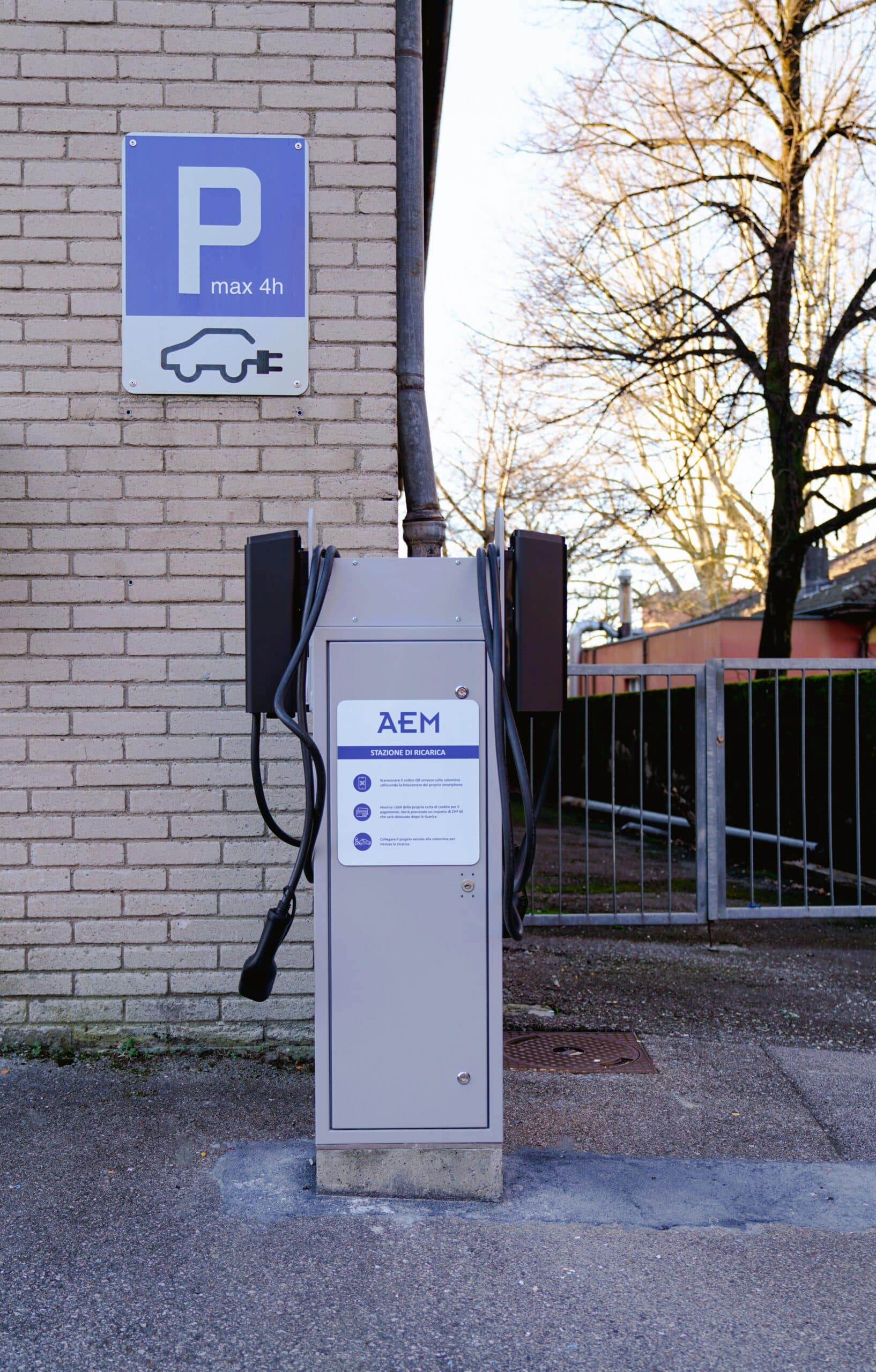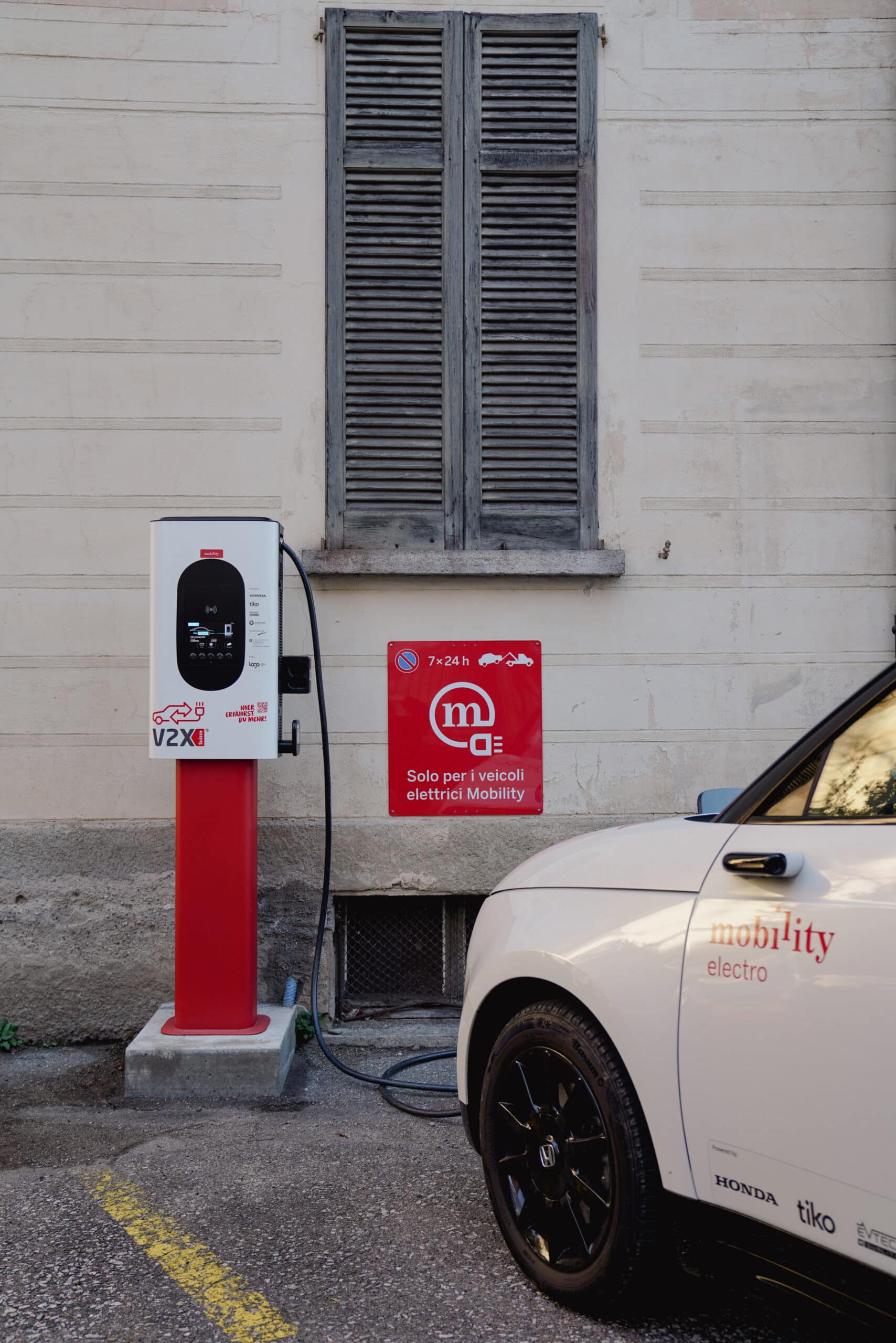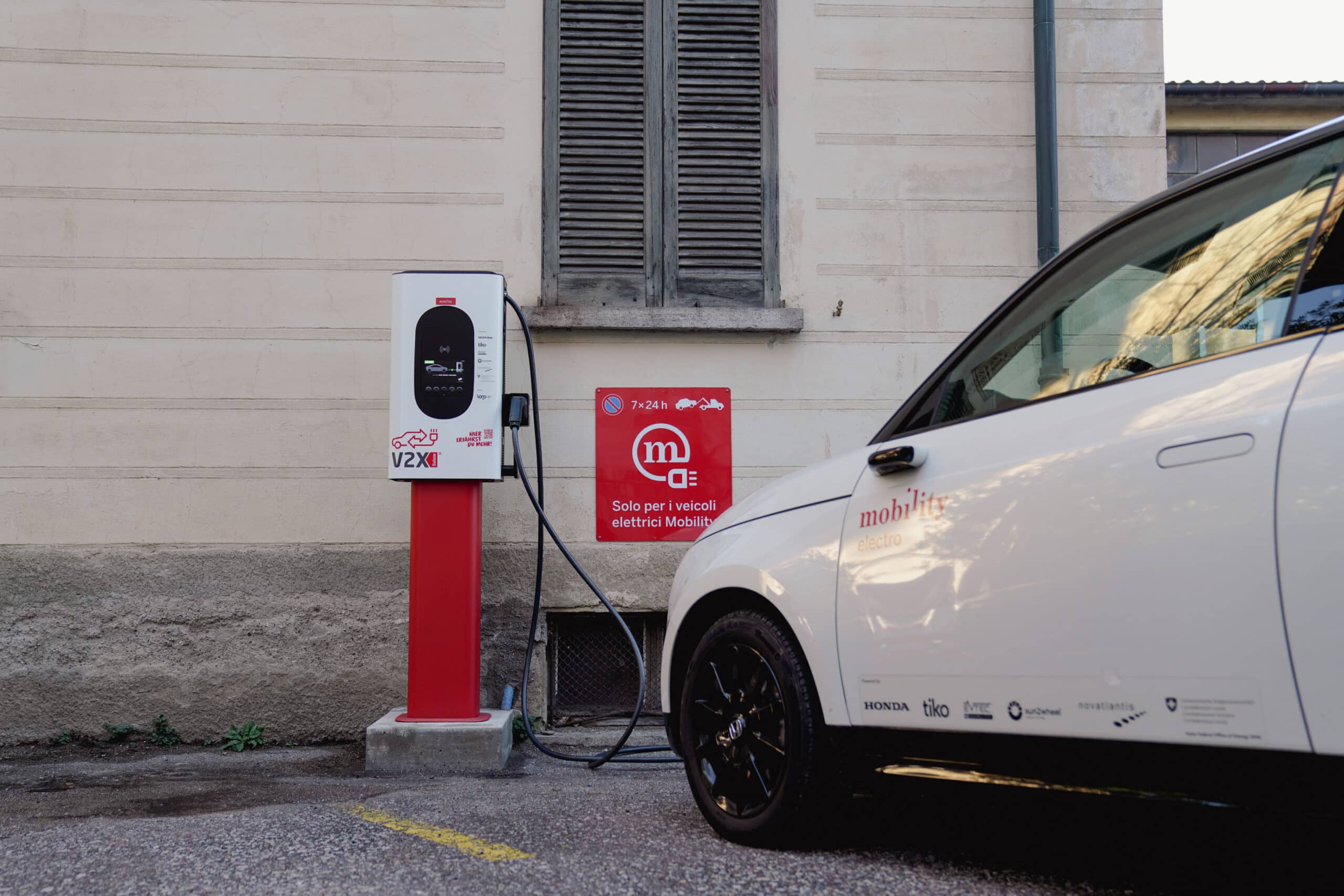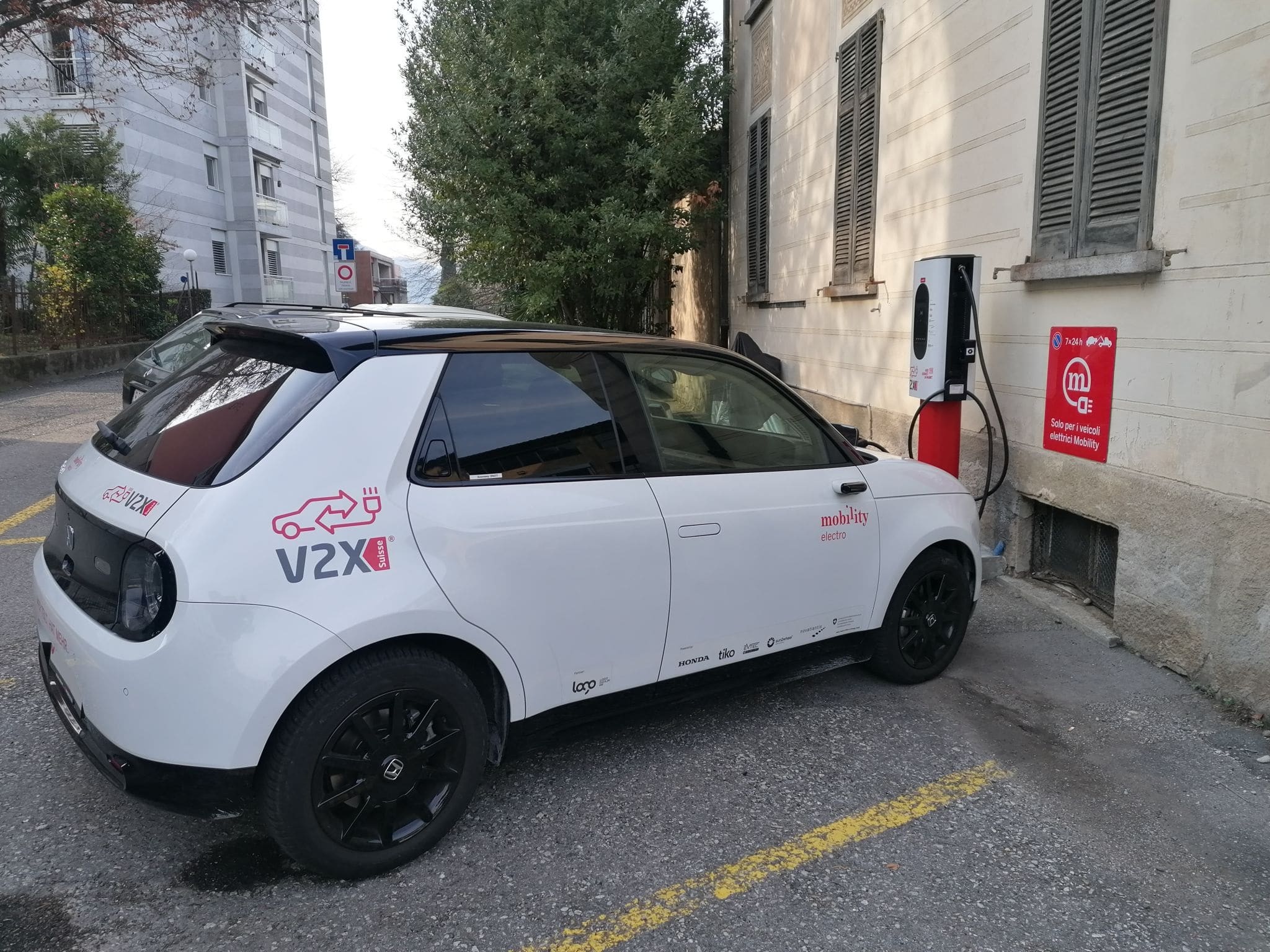Location
Massagno, Switzerland
Key Partners
Lead: Azienda Elettrica di Massagno (AEM)University of Applied Science and Arts of Southern Switzerland (SUPSI) Hive Power (HIVE)QUE Technologies (QUE)
Main Solutions
Identification of flexibility productsImplementation of demand response initiatives Reservation of flexibility assets for DSOsEnhancement of congestion management

Description
The urban district of Via Motta in Massagno, located near Lugano in southern Switzerland, is a diverse energy community comprising residential buildings, offices, warehouses, and an elderly care home. This district, which belongs to the AEM distribution network, is served by a 400 kVA substation strategically positioned in the middle of the neighborhood.
The area benefits from a comprehensive smart metering infrastructure that communicates energy production and consumption data every 15 minutes to AEM’s central servers, providing valuable insights with two years of historical data.
In this pilot site, a V2G-enabled charging station managed by AEM plays a crucial role in optimizing the self-consumption of the community. The district includes approximately 20 residential flats and single houses, alongside an office building housing engineering and legal offices, a daily-used warehouse, and an elderly care home with 60 single-bed rooms and about 94 workers. The energy community is further supported by a web-based monitoring tool developed by HIVE, which offers users real-time access to energy consumption and generation data, dynamic energy prices, and detailed financial implications.
The urban district features a photovoltaic (PV) plant with a total installed capacity of 60 kWp on the roof of the elderly care home, enhancing the local renewable energy generation. Additionally, a V2G-ready EV charging column (DC, 10 kW) and a car-sharing vehicle provide flexibility and battery storage solutions for the community. The district’s energy infrastructure is bolstered by several heat pumps, electric boilers, and air conditioning devices, collectively contributing 15-20 kW of power to meet various heating and cooling needs.
Overall, the pilot site in Via Motta aims to demonstrate innovative solutions for energy optimization and flexibility within a mixed-use urban environment. By integrating advanced smart metering, renewable energy sources, and flexible energy storage options, the community strives to enhance energy efficiency, increase self-consumption of locally generated power, and reduce reliance on the grid.
Innovations and Technological Advances
Forecasting and Planning: Advanced tools are used to manage Distributed Energy Resources (DERs) for grid congestion, increasing self-consumption and minimising power grid injection.
Optimised Dispatch: Enhanced dispatch mechanisms ensure precise control and utilisation of DERs for better grid stability and efficiency.
Vertical Integration: Surplus flexibility is integrated into the balancing group through an aggregator, focusing on local load management and grid efficiency.
Balancing Group and TSO Support: Surplus flexibility supports regional balancing groups and meets Transmission System Operator (TSO) requirements.
Recruitment Processes: Innovative processes for engaging and recruiting end-user flexibility. including clear explanations, cost and incentives, and transparent contracts.
Compensation Programs: Attractive compensation programs motivate end-users to contribute their flexibility, enhancing the community's energy efficiency and reliability.
Elderly Care Home Focus: Real net metering investigates fulfilling the local electrical and thermal energy needs of the elderly care home using DERs.
Optimising Distributed Generation: Reduces dependence on external power sources and enhances community sustainability through optimised distributed generation.
DER Forecasting and Dispatch: Advanced techniques address congestion within the grid. ensuring energy is consumed where it is generated for improved efficiency.
Self-Consumption Strategies: Increasing self-consumption within the community to reduce reliance on the main grid, promoting energy independence and
Local Utilisation: Flexibility is primarily used for managing local load profiles and avoiding grid congestion, ensuring high grid efficiency.
Regional and TSO Support: Surplus flexibility is integrated into regional balancing groups and used to meet TSO requirements, contributing to both local and regional grid

Contact Information
Demo Site Leader: Riccardo, Toffanin, rtoffanin@aemsa.ch








Demonstrators
-
Spain
The demonstration in Spain is taking place mainly in Zaragoza and the surrounding area (Aragon region in the North-East of Spain) and a secondary demonstration will take place in Asturias , Northern Spain (Check Map). With a sizeable portion of its population concentrated in its capital city, Zaragoza, and a sizeable industrial and service sector, Aragon has a high energy consumption rate. The rest of Aragon is mostly rural with a relatively dispersed population and a lot of renewable energy plants. All energy users and prosumers should be brought into flexible markets to help with the integration of these renewable sources. On the other hand, the secondary demonstrator (cluster #3) represents other side of Spanish consumers: big industrial energy demanders. For this reason, the Spanish demonstration site includes all types of energy consumers and prosumers i.e., office (cluster #1 and cluster #2), industrial buildings (cluster #3) and residential (cluster #4).
-
Greece
The Greek demo-site is located in the city centre of Thessaloniki and is composed of a set of 50 residential buildings, 3 energy retail stores and one large commercial facility managed by WVT as utility company together with INNO as energy efficiency services provider. Therefore, the whole demonstration area will represent a common EU neighbourhood and will aim at obtaining real experiences on how EU citizens can participate in and facilitate the deployment of flexibility services supporting the grid operators.
-
Bulgaria
Energy Consumption for ABILIX servers only – 35 MWh/y. Around 10 GWh/y for the whole DataCenter. Evenly distributed with no Seasonal peaks for servers. Cooling electricity consumption is generally 66% lower in Q4/Q1 than in Q2/Q3. Zero emissions (Green energy certificates from the energy utilities supplying power to the Data Centers, mainly fed by nuclear energy). Energy storage around 100 Кwh of batteries